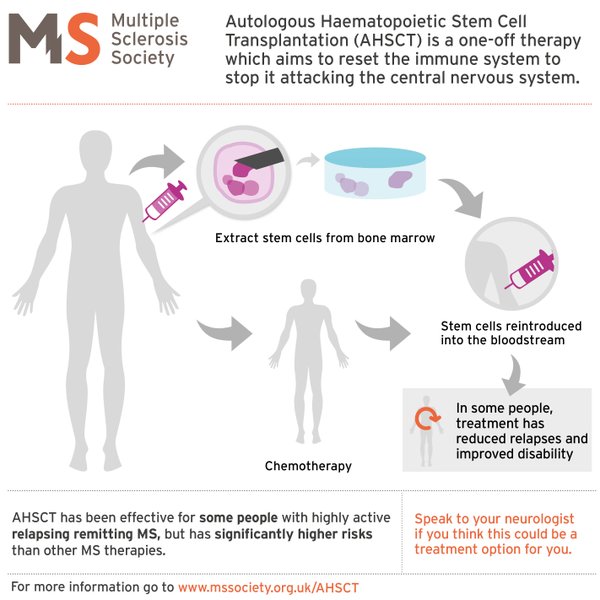Regenerative Medicine For Multiple Sclerosis Can Be Fun For Anyone
Table of ContentsRegenerative Medicine For Multiple Sclerosis for BeginnersWhat Does Regenerative Medicine For Multiple Sclerosis Do?What Does Regenerative Medicine For Multiple Sclerosis Mean?Some Known Questions About Regenerative Medicine For Multiple Sclerosis.Getting My Regenerative Medicine For Multiple Sclerosis To WorkAll about Regenerative Medicine For Multiple SclerosisRumored Buzz on Regenerative Medicine For Multiple Sclerosis
The mesenchymal stem cells hair transplanted during stem cell treatment can separate and grow to develop new cells that can fill in the damaged cells of the worried tissue. This might restore neurological functions in individuals with this problem. These advantages of stem cell treatment are more supported by the capacity of MSCs to advertise recovery.People with multiple sclerosis are usually treated with mesenchymal stem cells. These are multipotent stem cells that have the capability to set apart and develop to create a wide array of cell enters the body. When transplanted, these stem cells can develop to form healthy nerve cells hence supporting the regeneration of the damaged tissues of the nerve system.
As soon as hair transplanted, the stem cells move to areas of swelling or damage within the main anxious system (CNS). They are normally attracted to the sites of injury where the immune system is attacking the myelin sheath, the protective treatment of nerve fibers. The stem cells function by advertising the fixing and regrowth of damaged myelin, possibly bring back function to affected nerve cells.
The Definitive Guide to Regenerative Medicine For Multiple Sclerosis
Stem Cell Study on MS The National Multiple Sclerosis Society, along with various other companies, is proactively moneying and supporting research study into mesenchymal stem cell therapy for numerous sclerosis to explore their potential and improve treatment protocols. The goal is to create safer and a lot more efficient methods to make use of stem cells in dealing with MS.
Facts About Regenerative Medicine For Multiple Sclerosis Uncovered
Here are below from evaluations of individuals Swiss Medica clinic. The individual traveled from Romania looking for therapy for MS after hearing positive comments concerning stem cell treatment for the condition.
Get a totally free online examination to discover just how stem cells will function for your case, and what are the period and price of the treatment. Uccelli, A., Laroni, A., Brundin, L., Clanet, M., Fernandez, O., Nabavi, S. M. Regenerative Medicine for Multiple Sclerosis., Muraro, P. A., Oliveri, R. S., Radue, E. W., Sellner, J., Soelberg Sorensen, P., Sormani, M. P., Wuerfel, J. T., Battaglia, M
Stem cells are cells in the body that can mature into develop right into that serve a specific functionDetails There are two major types of stem cells: beginning stem cells and adult stem cells.
are found in some grown-up tissues and organs including the bone marrow, skin, blood, and brain. Adult stem cells are not as adaptable as beginning stem cells and are therefore more minimal in terms of the sorts of cells they mature right into. The one-of-a-kind residential or commercial properties of stem cells provide guarantee for new treatments that can slow/halt MS condition activity and repair service tissue damages in the central nerve system.
Getting The Regenerative Medicine For Multiple Sclerosis To Work

The treatment includes collecting stem cells from a person's very own (autologous) bone marrow. The individual is then treated with chemotherapy to diminish the body immune system and stem cells are reestablished right into the body where they develop into brand-new, healthy and balanced immune cells - Regenerative Medicine for Multiple Sclerosis. Stem cells can be infused into the body in various methods

In 2000, the MS Society of Canada and MS Scientific Research study Structure moneyed a medical test involving HSC transplants, led by Drs. Mark Freedman and Harry Atkins from the Ottawa Health Center Study Institute/University of Ottawa. The aHSC treatment offered in Canada is a therapy that makes use of high-dose radiation treatment, additionally called conditioning.
Not known Factual Statements About Regenerative Medicine For Multiple Sclerosis
Neural stem cells (NSC) are visit their website found in the mind and can develop into various sorts of brain cells including neurons, oligodendrocytes, and astrocytes. NSCs may offer to fix or secure the brain and modulate the immune system. Early scientific trials in non-human primates demonstrated that treatment with NSCs profited the development of MS-like disease in pet designs.
The outcomes from these security researches declare for future stem cell and regenerative medication therapies in MS. Future scientific tests (phase 2 and 3) with bigger varieties of participants and controls are required to analyze the efficacy of this treatment for MS. As demonstrated by the instances above, there is a large range of research happening that will give added solutions regarding using stem cells to deal with MS.
Stem cell therapy is considered safe, but, like any clinical procedure, it brings some risks, such as momentary swelling or pain at the shot site. Major side results are uncommon when carried out by certified experts.
Regenerative Medicine For Multiple Sclerosis for Dummies
Multiple sclerosis (MS) is a persistent illness of the main nerve system that affects the mind and spine. It is defined by the degradation of myelin, a material that covers nerve fibers, bring about disruptions in communication between the brain et cetera of the body. Signs and symptoms can differ widely and consist of muscle mass weakness, vision problems, discrepancy, and exhaustion.
Numerous sclerosis is defined by the immune system click now erroneously attacking the safety sheath (myelin) that covers nerve fibers, triggering interaction problems in between the mind and the remainder of the body. The illness can cause the wear and tear or permanent damage of nerves. Signs differ extensively amongst patients and can consist of tiredness, flexibility concerns, pain, and cognitive adjustments.